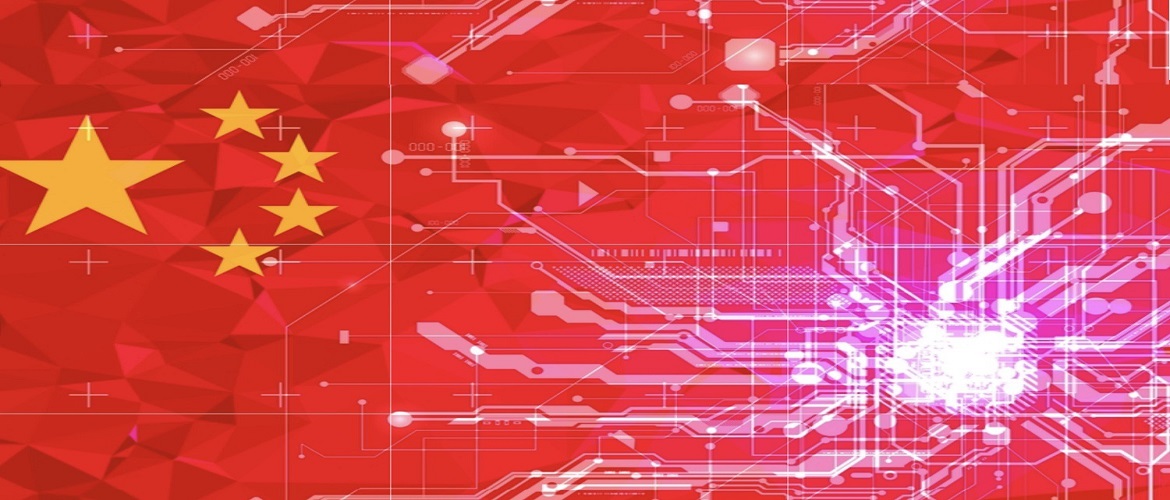Unstoppable! The Dragon's Digital Dominance
October 4, 2020 | Expert Insights

Even as the world was coming to terms with the economic and geopolitical import of China’s Belt and Road Initiative (BRI), this ambitious project took a new turn in 2015. Through a series of policies issued by the Chinese government, the BRI acquired an overtly technological and knowledge-driven dimension. This eventually came to be known as the ‘Digital Silk Road’ (DSR).
At present, as part of its aspirations for the DSR, China plans to unveil the ‘China Standards 2035’. This is a 15-year blueprint for Chinese companies to shape global standards in next-generation technologies, including 5G internet, Artificial Intelligence (AI) and the Internet of Things (IoT). The rapid digitisation of society, against the backdrop of the COVID-19 pandemic, is only likely to accelerate China’s bid to shape global standards and acquire digital dominance.
WORK-IN-PROGRESS
The DSR is an ongoing project. Over the years, China has announced different policies that offer a window into its final layout. In 2015, a white paper was issued by the government that focussed on the creation of an ‘Information Silk Road’, even while emphasising the development of infrastructure and trade networks under BRI. By charting this new course, China sought to expand cross-border optical cables, telecommunications networks, transcontinental submarine cables as well as satellite passageways.
In 2017, this was rebranded as the ‘Digital Silk Road’. Through it, China called for further integration of the BRI, with quantum computing, nanotechnology, AI and digital economies. Emphasis was placed on the development of smart cities as well.
In the meantime, this push towards digital dominance was accompanied by domestic policies such as ‘Made in China 2025’ and the ‘Internet Plus’. These were strategies designed to transition China from a low-end manufacturer to a high-end producer of goods, by boosting the self-sufficiency of traditional industries and integrating them with the internet.
The most recent announcement, the ‘China Standards 2035’, whereby China seeks to script global standards in emerging technologies, is the natural successor to these policies. After all, achieving dominance in global standards is predicated on China’s own sufficiency in designing and manufacturing hi-tech products. When viewed together, these policies reveal China’s planned ascendancy to the status of a ‘norm-setter’ in the global digital space.
NORM-SETTER
Implicit in the ‘China Standards 2035’ policy is an attempt to regularise Chinese digital standards across the globe. As with any industry, the tech industry also uses standardised processes while building and designing digital products. This means that an expansion of emerging Chinese technologies across the digital ecosystem would lead to universalisation of Chinese technological standards. This represents a potential area of vulnerability for countries like India.
Take, for example, Indian telecom companies like Bharti Airtel or Vodafone Idea that rely on Chinese hardware. Since India has limited capacity to manufacture devices or network equipment, it mostly imports them from China. Shifting to non-Chinese manufacturers would be difficult now, due to the additional costs involved or issues pertaining to technological compatibility. In effect, this means that Indian telecom companies have developed a vested interest in the regularisation of Chinese standards. This is also true for the digital payment space in India, where ATMs and 'point of sale' equipment are mostly imported from China, effectively sealing in the standards set by Chinese tech companies.
Here, unravelling China’s norm-setting trend has helped to identify Indian dependencies on Chinese hardware imports. It prompts a reassessment of the ways in which the competitiveness of Indian hardware manufacturers can be augmented. A similar strategy can be deployed towards identifying vulnerabilities in sectors such as e-commerce and 5G technology in India, where Chinese companies like Ali Baba or Huawei wield considerable influence.
GROWING FOOTPRINT
From Asia to Africa, China has laid the groundwork for its DSR initiative. For instance, in the infrastructure sector, it has expanded Beidou — a global satellite navigation system — into Laos, Brunei, and Thailand. The strategic value of this system lies in its ability to act as a potential alternative to the U.S.’s Global Positioning System (GPS). In Africa, Huawei has been facilitating the development of smart cities. Often funded by state loans, these companies use AI and cloud computing to improve the provision of services in urban areas.
Clearly, China’s digital footprint is discernible everywhere. For India, however, what is particularly concerning is the creeping expansion of Chinese technologies in South Asia. For example, under the China-Pakistan Economic Corridor, both sides have pledged to improve bilateral communication through a fibre optic network. Nepal has also operationalised a joint optic fibre link, which provides access routes to internet services via China. China’s digital presence is also visible by way of satellite navigations systems in Sri Lanka or IT infrastructures in the Maldives.
In light of this, India needs to offset China’s norm-setting ambitions in its neighbourhood, by leveraging its own advantages in the sectors of IT and space. It needs to share its technological capabilities with its neighbours on a larger scale. The launch of a regional satellite for SAARC countries in 2017 was a step in the right direction.
To establish its footprint and remain relevant in the digital ecosystem, it is important for India to convince its neighbours that all digital roads do not lead to China.








Comments